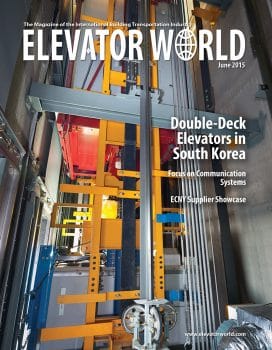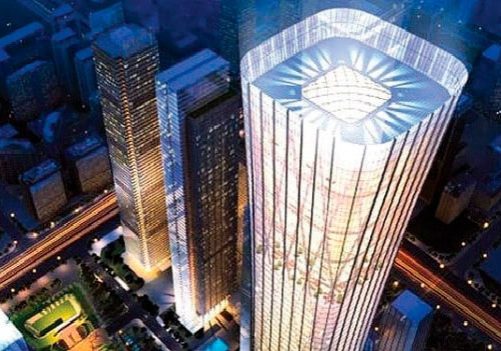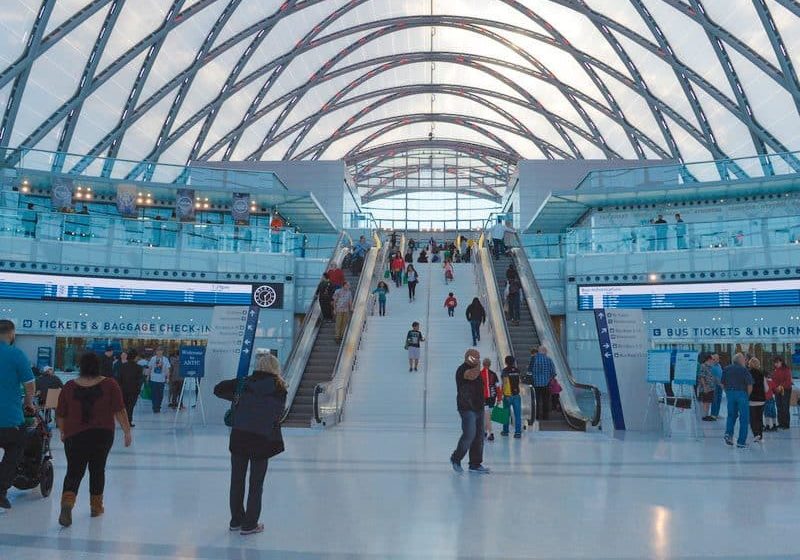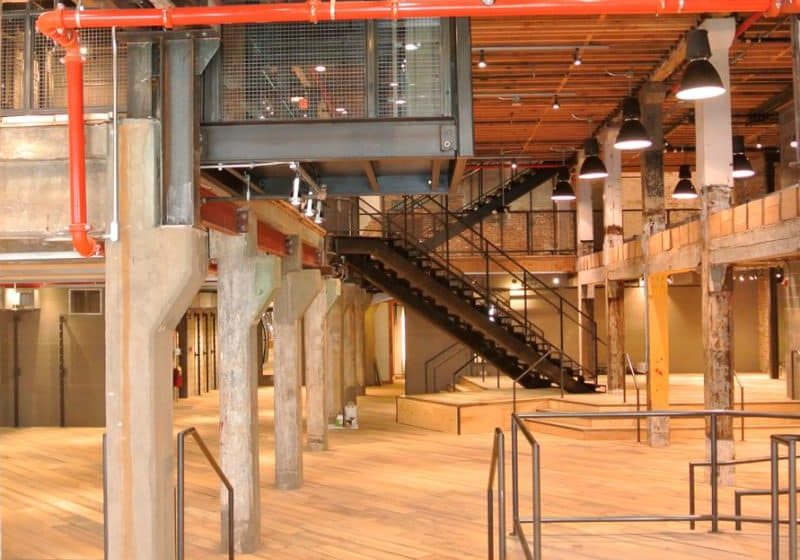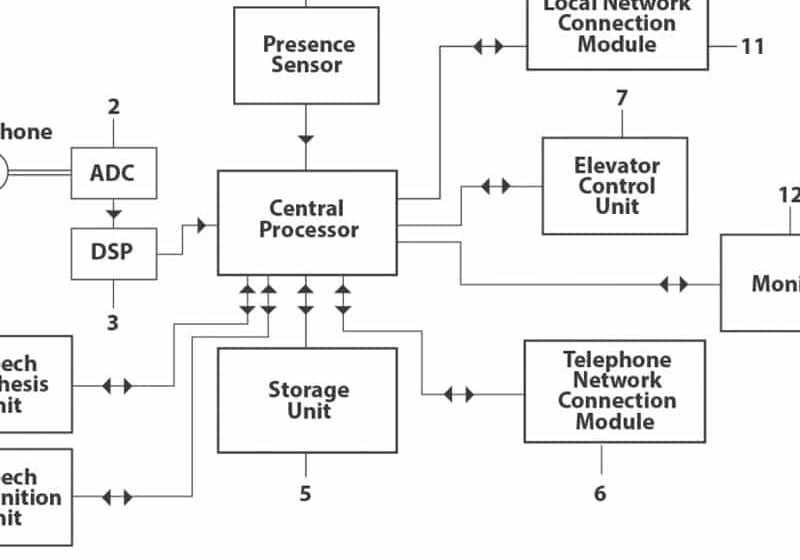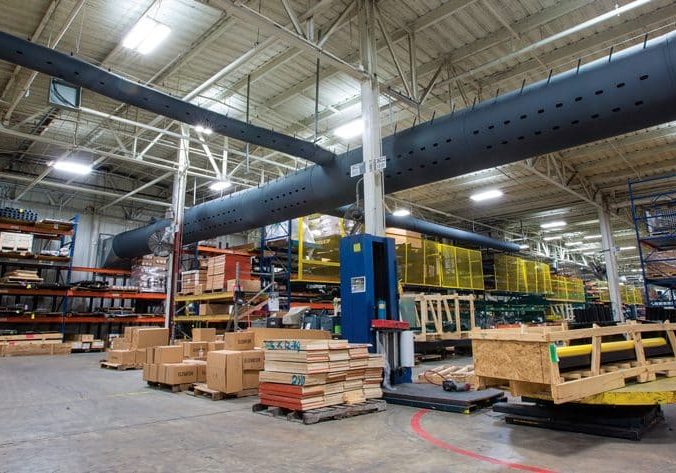Advantages of Implementing M2M and Cloud Services in Retrofitted Elevators
Jun 1, 2015
This paper was presented at  Paris 2014, the International Congress on Vertical Transportation Technologies, and first published in IAEE book Elevator Technology 20, edited by A. Lustig. It is a reprint with permission from the International Association of Elevator Engineers
Paris 2014, the International Congress on Vertical Transportation Technologies, and first published in IAEE book Elevator Technology 20, edited by A. Lustig. It is a reprint with permission from the International Association of Elevator Engineers  (website: www.elevcon.com). This paper is an exact reprint and has not been edited by ELEVATOR WORLD.
(website: www.elevcon.com). This paper is an exact reprint and has not been edited by ELEVATOR WORLD.
ABSTRACT
The recent developments in M2M (machine-to-machine) and cloud platforms are changing the way machines communicate and integrate with each other in highly efficient and cost-effective ways. These capabilities, just starting to enter the elevator market, can provide significant benefits, especially to the millions of older elevators in Europe and North America, which must be retrofitted to comply with mandatory safety & accessibly regulations. This article outlines new connected elevator applications that are able to turn any elevator into an intelligent elevator, providing added-value to elevator companies, property managers and passengers.
1. INTRODUCTION
Millions of elevators in Europe, North America, and the rest of the world are in need of upgrading and retrofitting in order to meet mandatory regulations and practical serviceability.
In the past, it was thought that these types of upgrades were expensive and painstaking.
But, things are different today.
We are living in a new world, with new technology that is revolutionizing the practices of the past.
For example, many of us have smart phones with us. These relatively new devices have dramatically impacted the way we communicate and relate to the world on a daily basis.
Similarly, some of us even live in smart homes, with technology designed to save energy, foster convenience, and provide comfort as well as security.
With all of the changes in technology over the last few years, it should surprise no one that the world of elevators has dramatically changed, too.
New machine-to-machine (M2M) application technology is having a significant impact on the way we can use innovation to bring older elevators into compliance with the demands of our modern world.
2. M2M & CLOUD
Although connecting devices and machines to the internet is not a new concept, it’s still in the early stages. From portable and wireless point-of-sale terminals, to remotely-monitored smart thermometers, to smart homes operated via smart phone apps, hundreds of millions of devices and services are increasingly being connected and controlled.
M2M (machine-to-machine), IoT (Internet of Things) and “Thingernet” are all used to describe communication and service technologies transferring information in an automated way with little or no human interaction between connected devices and various applications. The main usages for M2M are related to monitoring and control. Early applications were based on analog telephone lines, but the growing use of mobile networks shifted connectivity to wireless means.
Both consumers and businesses benefit from M2M capabilities. M2M technologies are now leading businesses to more effective and efficient service and operational models. Consumers (or “end users”) are enjoying new applications in their homes, cars, and offices for better security, more comfort and a better quality of life.
The number of connected devices keeps growing at a very fast pace. It is estimated that worldwide M2M connections will increase twenty times or more in the next decade, reaching more than 2.5 billion devices by 2023, as compared to just over 100 million in 2013.
Revenues associated with M2M-connected devices are also expected to increase dramatically over the same period, reaching more than $50 billion or even $100 billion in 2020, making M2M of one of the world’s highest CAGR industries. This is even more interesting when considering that ARPU – average revenue per user (or per unit) for networking and mobile companies is expected to decline to as little as $2 (per device per month) in 2020. The tremendous number of devices, despite their low ARPU, is a significant growth factor for mobile network operators as their traditional voice and data markets become increasingly saturated.
The other important factor in this growing segment is the extensive use of cloud services alongside connected M2M devices.
The cloud computing concept is built from a large number of distributed computers connected through a real-time communication network. In such a way, programs or applications run on multiple virtual hardware systems, simulated by software. Cloud services can be easily scaled up or down in real-time according to traffic and usage without affecting the end user experience or the overall quality of service.
Cloud services are built upon significantly lower costs of infrastructure and development compared to the former concept of dedicated servers for each application. Small to medium-sized organizations with limited resources can use (or offer to their customers) solutions that, not so long ago, were limited to enterprises and much larger organizations. This opportunity allows cloud platform providers to develop enhanced vertical applications & service management solutions for managing M2M devices; still those remain relatively small compared to the global M2M opportunity.
Cloud services and technologies are no longer considered unsafe or unreliable. Furthermore, many mission-critical enterprise apps, including back-end, retail solution utilities and more, are currently in the cloud, or about to move there in the next few years. This is not yet the case for most elevator businesses.
3. WHY RETROFITTED ELEVATORS
A very large number of elevators in Europe and North America are aging and are still in use over 1 billion times daily. It is estimated that over 40% of all elevators in Europe are at least 20 years old and new regulations are necessitating changes to make them safer and more accessible to people with disabilities. Millions of retrofitting and modernization installations will take place in the next few years.
Modernization is a process aimed to make existing elevators more reliable, safe, efficient and pleasant to use. Upgrades keep elevators and passengers moving up and down without replacing complete systems. There is also a very large difference in the associated costs of full modernization processes compared to smaller scale controller/panel/cabin and other sub system modifications. Thousands of building owners and elevator companies are finding the right balance of performance and cost for modifications and retrofitting jobs on a daily-basis.
3.1. Large Opportunity For M2M
The combination of the new M2M and cloud capabilities mentioned above and the implementation of increasingly strict regulations provides a significant opportunity for new services to play an important role in the upgrade of existing elevators. The European directive EN81-28, for example, states that all elevator operators and manufacturers should provide both emergency call and diagnostics systems.
To implement these systems, which both require voice and data connectivity, there are various technical and infrastructure options. Large office buildings might be equipped with fixed network communications based on cable or other means. However, cellular communications can meet the legal requirements while providing significantly lower costs related to installation and communication fees.
Some elevator manufacturers, in relatively recent new installations, provide remote monitoring through dedicated hardware and software services. However, this tends to be a much more challenging task with older controllers that still compose the majority of the market.
4. THE SMART ELEVATOR CONCEPT
Throughout this article, the term Smart Elevator Solution (“SES”) will be used to describe a system capable of offering M2M and other advanced functions to existing elevators. Some of the main features of SES systems are:
- An elevator that is constantly connected to the outside world using a telecommunication module
- Data & information from the SES is stored on a cloud service, allowing remote secure access to service companies, building owners and even end-users. Since hosted infrastructure is not needed by the elevator company, even the smallest company can operate and offer it this service
- Uses micro-controllers, software and advanced inputs/outputs in real time to detect any problem or failure
- Sending emergency warnings and alarms to the cloud
- Allow remote automatic software updates and configuration changes
- Able to connect and integrate to various 3rd party services via simple APIs in order to expand the elevator ecosystem.
SES systems can be installed in any elevator, regardless of controls and type. Replacing the elevator COP with SES system, or having the SES system installed as an add-on module near the elevator controller are probably the easiest ways to integrate new functionality without going through extensive certification processes.
SES and M2M-capable elevators cut down maintenance costs for service companies and building owners, where information on technical alarms improves the performance of service routines and emergency call systems. Combined with an integrated bundled communication packages and contracts, extremely cost-effective solutions are now available.
5. NEW SMART APPLICATIONS
In this section, various applications and use cases will be described to outline the possibilities and advantages of SES systems.
5.1. Preventive Maintenance and Improved Support
It is a known fact in the industry that the average fee for a monthly elevator service contract has been going down steadily. This can threaten the business of both small and large service companies, which are required to dispatch field service technician on site to fix a problem and bear the associated costs.
Efficient preventive maintenance strategies and methods should be the goal for every company providing elevator services. The ideal solution would provide alerts on time BEFORE things happen and AFTER they occur.
In order to allow this, various algorithms and monitoring procedures running 24/7 should look for malfunctions or abnormal behavior in operational parameters.
This information can be logged and analyzed within the SES and sent to a remote cloud server. When required, the system can send notifications to the service company and/or building owner and, if needed, dispatches a technician.
Using web applications, customer dashboards provide service companies and building owners with valuable data, including performance summaries and maintenance histories.
Accumulated information and “Big Data” are very useful, since this information can Accumulated information and “Big Data” are very useful, since this information can buildings with similar characteristics.
Big data can offer equipment type analysis. For example if we know that the MTBF of a certain motor is X hours we can measure the real usage based on tracking rides and can predict that replacing this part is not yet required.
Although elevators are built from numerous components, few are expensive and require long installations. Identifying potential problems in these components using sensors and reliable M2M report mechanisms can save significant money and time compared to current conditions where problems are usually detected when it’s already too late.
Preventive maintenance can lead to improved building owners and passenger satisfaction; fewer calls for service companies, and potentially fewer malfunctions, translate into less motivation to switch service company when the service contract expires.
5.2. Remote Support and Better Information to Technicians on Site
SES systems can recommend the correct spare part: if linked to the elevator manufacturer system, the relevant technician can be notified with a list of suggested spare parts and react in a more efficient way to the call
When a technician is performing a service call, an SES system linked to a content solution can offer drawings, videos and other training and support elements that can help solve problems in a faster way. The system can even be configured to escalate the call to specialized technicians within the service organization, if needed.
All of these functions can easily be achieved on the elevator’s SES display, if one exists, or on the technician’s mobile/tablet application.
5.3. Dynamic Modifications to an Elevator
An existing elevator, or group or elevators, do not need to rely on the static parameters defined when the elevator was first installed. The SES system can modify the behavior of the elevator according to special demand by creating virtual calls from the elevator COP to the controller.
For example, within a group controller, car #4, which normally serves floors 21-30, can be remotely (via secure web access) changed to serve floors 10-25. This can occur if the SES traffic analysis mechanism defines a short term change or if the property manager defines such a scenario due to special circumstances in the building (VIP service, party, etc.).
5.4. Security and Access Control Connected to Building Automation Systems
The demand for security is increasing all over the world. In elevators, CCTV security cameras and access control systems are used in order to allow restricted access and better, safer environments for passengers. In older elevators, integration of such systems can be costly and require complicated installations.
SES systems have these types of capabilities integrated from day one, or can easily add them after installation. Building access control for office/government buildings can be linked to the cloud platform serving the SES system and offer quick and cost-effective security solutions to the elevator car. If a video camera is used, it can provide recognition and other advanced capabilities, which will ensure that only authorized people are using the elevator.
Another use case called ‘Elevator Nanny’ can be offered: you can “drive” your child in the elevator, without the physical presence of an adult, by calling and dispatching the elevator remotely while opening a video/voice channel and supervising him/her until he/she leaves the elevator.
5.5. Real-Time and Commercial Information
The growing use of LCDs and networks allow useful information to be presented to the elevator passaners. Various services already exist but, in most cases, they are not directly linked to the elevator parameters and ride patterns.
Building owners or property managers can use the SES screen and content-generating cloud services as a tenants’ “billboard.” This solution uses less paper, and is well viewed by tenants and passengers using the elevator. But this is just the beginning.
SES systems can offer relevant focused information based on the destination of the elevator, taking usage patterns, estimated arrival times, and floor-specific information into consideration. This can be achieved by using a dedicated service in the SES cloud to serve up external content in real time.
Future applications might offer additional advantages, expanding the elevator/building ecosystem. For example, the parking system, secured payment modules and external authentication systems can be integrated with the SES system to allow riders to pay for parking in the elevator car using their mobile phone.
5.6. Better Safety and Emergency Situations
SES systems can identify emergency situations automatically. In such cases, passengers, which may be under stress, do not need to perform any action. The SES will immediately detect such a scenario and will use its M2M capacities to open a two-way communication channel to the service center.
Other capabilities can assist elderly people and people using wheelchairs. In residential buildings, increasing the door opening time for certain floors can be easily configured by the SES. More advanced features can use the camera to detect a falling person, communicate with personal alert systems, and provide 24/7 automatic connection to rescue centers.
5.7. Saving Energy
Making greener, more energy-efficient systems is a challenge for some elevator manufacturers. SES systems connected to cloud services can analyze usage and help reduce power consumption and eliminate unnecessary elevator rides. SES systems connected to the building’s access control system and attuned to ride patterns can initiate virtual calls and modify the elevator car location accordingly. SES systems can also communicate with passengers, helping them to avoid rides to empty floors (i.e. after working hours or during weekends in office buildings).
Designing maintenance and preventive maintenance models, as described above, can also eliminate unnecessary technician visits to the site and, by that, reduce fuel consumption and air pollution.
5.8. Reduced Communication Costs if Using M2M for Voice and Data
As mentioned above, ARPU fees are going down and will continue to do so in the upcoming years
Maintaining analog PSTN lines for emergency phone usage tends to cost as much as $30 per month in some countries. In some countries analog PSTN lines for elevators will soon not be available as they are not affordable for the telecommunication companies. On the other hand, a M2M package from a mobile carrier can be as low as $2 or even less, which is a significant cost reduction for the building. In addition to providing the connectivity to meet the emergency phone regulations, M2M offers server connectivity, which is cumbersome for PSTN.
6. USE CASES
This section describes how SES systems can improve everyday life for end users (tenants/passengers) and elevator companies using set of applications described above.
Let’s use Dana Smith as an example. She lives in a large urban city within a 25 storey residential building. Her apartment is #173 on the 17th floor.
The elevator in her building was installed in 1985, but recently had an SES system retrofitted and connected by Up-Elevators, a company that provides service to the elevator.
Parking space for cars is limited in Dana’s neighborhood; therefore, a second elevator in the building is used to bring the cars to the tenants upon request. Dana’s apartment includes a home automation gateway responsible for smart home applications (controlling electrical devices, home theater, security, and more).
Getting Home
It’s now 18:00. Dana just entered the building from the street. She carries 3 bags from the super market and is eager to get back into her nice apartment. The SES in the elevator recognizes Dana’s phone via Bluetooth and, once the elevator door opens and Dana gets in the cabin, it automatically generates a 17th floor call for her (based on a predefined script).
When the elevator starts going up, the SES system communicates with Dana’s home automation gateway via its internal M2M module to the internet. The SES system informs the home automation gateway to operate a “coming home” scenario, turning on lights, air conditioning and Dana’s favorite music on her home receiver.
Dana feels much better now when entering her apartment.
Going Out
It’s 7:45am and Dana is on her way to work. She is using a pre-defined script to call the elevator from her apartment; the SES system receives her call and 15 seconds later she gets a message that the elevator will soon reach her floor. Dana has time to lock the door and get into the elevator. Once inside the cabin, the SES in the elevator recognizes Dana and communicates with the second SES located in the parking elevator. The car elevator brings Dana’s car to the right place just as she gets to the parking lot.
Technical Notification
John Green, an experienced technician with Up-Elevators, has just finished lunch.
The SES system connected to the door sensor at the elevator detected a potential problem in one of the door mechanisms. The SES system informs the server about this problem and, as John is the closest technician to the building, a pop up notification on his mobile phone dispatches him to the site. When he arrives, he already knows what part to bring with him and is able to detect and fix the problem in minutes.
7. BENEFITS THROUGHOUT THE CHAIN
In summary, when retrofitting legacy elevator systems, the implementation of M2M and cloud services provides a broad range of benefits at each level of the chain. Elevator companies performing upgrades are able to retrofit and add new capabilities at a fraction of the cost compared to what the market dictated in the past. M2M components and cloud-based technologies are more reasonably priced than ever before and, once installed, they help companies to reduce expenses by improving logistics, increasing efficiency, and providing better control over operations.
Property managers and building owners can also enjoy reduced costs enabled by the new technologies, as well as more effective communication with tenants. SES systems even enable new revenue streams, which will be covered in more detail in a forthcoming paper.
Passengers will certainly appreciate the user experience as they use the new, upgraded equipment. In addition to better security and support for disabled people, the elevator cabin will become more welcoming as a location offering engagement and convenience catering to their lifestyle and usage patterns.
8. CONCLUSION
M2M and cloud services represent some of the world’s most promising technologies propelling business growth in today’s era. These technologies are here to stay and will continue to provide tremendous benefits to various industries, elevators included.
The time is now right to implement these technologies in the elevator arena, where mandatory regulations and millions of aging installations have created a serious need for change in the industry.
We are beginning to see that smart elevator systems can be affordable, simple to implement, easy to use, secure and reliable. Combined with the latest telecommunication methods and applications, older, legacy elevators can “leapfrog” into the modern era and be transformed into smarter systems that engage with us and uplift us all to new heights.
Get more of Elevator World. Sign up for our free e-newsletter.

